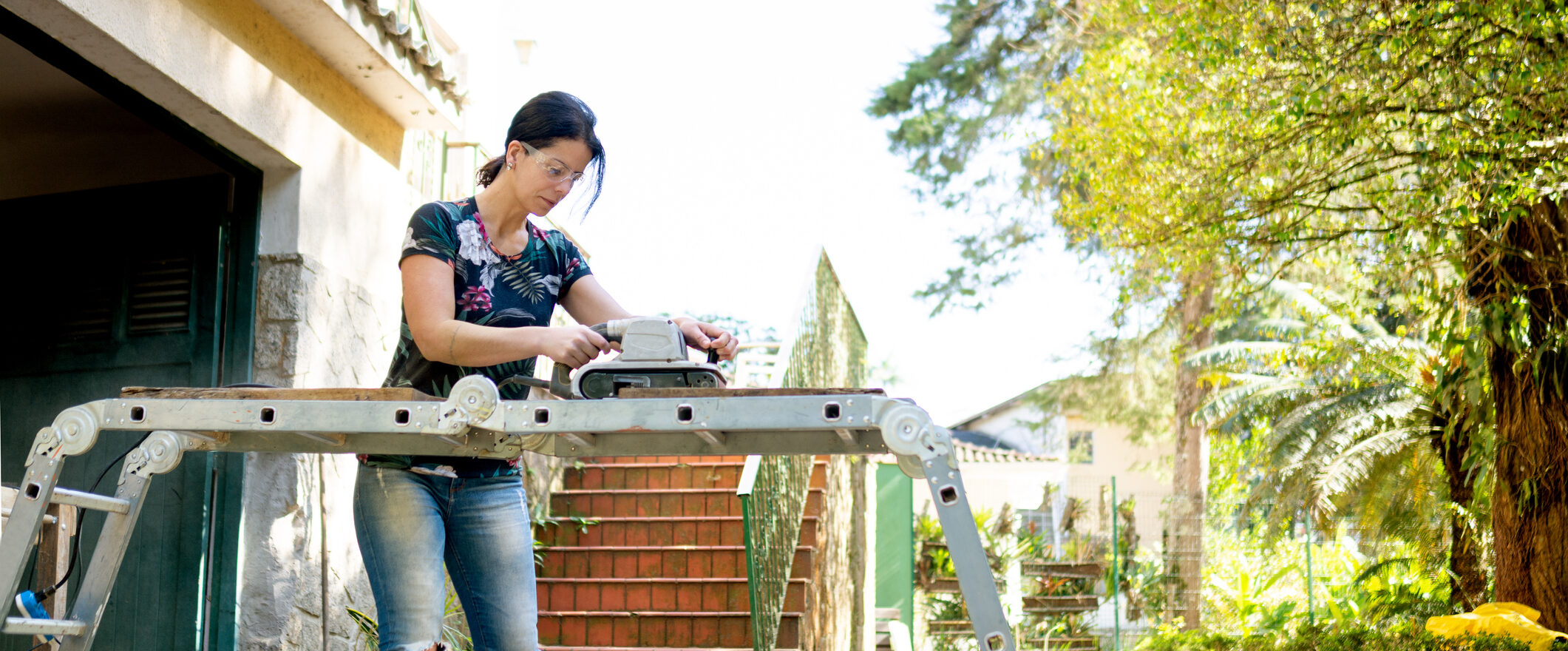Homeownership can be a budget-shredder, which is why products like collateral mortgages exist.
A collateral mortgage is like getting both a mortgage and a line of credit approved at the same time, with your home acting as collateral for the line of credit.
If you need to pay for potentially costly home renovations, car repairs or even tuition, a collateral mortgage can provide access to the cash you need.
What is a collateral mortgage?
A collateral mortgage is really two loans in one. You get approved for both a traditional mortgage and a readvanceable line of credit based on home equity, meaning the amount you can borrow increases as you build equity in your property. The collateral involved is your home.
Collateral mortgages share characteristics with both conventional mortgages and home equity lines of credit (HELOCs), but it’s the differences that you really need to understand.
Collateral mortgages vs. conventional mortgages
With a conventional or “standard charge” mortgage, only the amount of your mortgage is registered. If you need to access home equity later, you’ll have to formally apply for the appropriate loan product, re-qualify for the additional funds and register a new mortgage. You’ll likely have to pay fees to your lender along the way, as well.
A collateral mortgage means you’ve already been approved for both your original mortgage and an additional loan amount, which can be worth up to 125% of your home’s value. Accessing the funds when you need them should be quick and frictionless.
Most lenders offer both conventional and collateral mortgages; some will even allow you to secure other loans using a “collateral charge mortgage”, where the home acts as collateral for other financial products, such as an auto loan or line of credit.
Collateral mortgages vs. HELOCs
HELOCs and collateral mortgages are both ways of turning home equity into cash that you can access as needed, but with a HELOC, you would normally apply after several years of appreciation and equity growth. The amount you could borrow would be based on the equity available to you at the time of application.
With a collateral mortgage, the amount of additional funds you can access is determined when the mortgage is initially approved. Since your lender has already signed off on the additional funds, you won’t pay any transactional fees to access them like you would when getting a second mortgage or refinancing.
Best Mortgage Rates in Canada
Compare Canada’s top mortgage lenders and brokers side-by-side and find out the best mortgage rates that will meet your need
How a collateral mortgage works
Let’s assume you’re purchasing a property for $500,000 with a 20% down payment worth $100,000. That means you’ll need a $400,000 mortgage.
But your lender offers you a collateral mortgage of up to 125% of the value of your home, which could be registered with a value of $625,000 ($500,000 x 1.25). This is the maximum amount you’ll be able to borrow, taking into consideration that you can legally only borrow up to 80% of the appraised value of your home, minus what you still owe on your mortgage.
Now, imagine that you opted for a collateral mortgage, and it’s been a few years since you bought your home. It’s time to replace the HVAC system, and you need some cash to pay for it. Will your collateral mortgage cover the $15,000 you need?
- Assume your home is now worth $550,000 and that you have $350,000 left on your mortgage.
- The most you can borrow is 80% of your home’s value ($550,000 x .8 = $440,000), minus what you owe. You’ll have $90,000 available, which will pay for your HVAC no problem.
As a readvanceable loan, the amount you can borrow increases as your mortgage shrinks and your equity builds. In the example above, if you had paid off an additional $10,000 of your mortgage, you’d be able to borrow $100,000.
But no matter how much your home appreciates or how quickly you build equity, the most you will ever be able to borrow is the $625,000 approved at the outset of your collateral mortgage.
Advantages of a collateral mortgage
It’s easy access to more cash
A collateral mortgage lets you access the equity you’ve built in your home. You can use the funds for anything you like, such as home renovations or paying down high-interest debt.
There are no legal costs
Since a collateral mortgage is set up when you buy your home, you won’t need to pay additional legal fees when borrowing the money, like you would if you refinanced your mortgage.
More equity means more financing
With a collateral mortgage, you’ll have access to more financing as your equity grows. This can be a handy feature if you’re planning a major purchase or expensive project in the future.
Disadvantages of a collateral mortgage
You might pay a higher interest rate on the additional amount you borrow
Without reading the fine print of your collateral mortgage contract, you could wind up agreeing to pay much more in interest on the additional funds you borrow. Lenders can increase the rate charged on those funds anytime they see fit, too.
Other lenders may deny you financing
Think again about that $625,000 collateral mortgage we discussed in relation to a property valued at $500,000. To you and your lender, that $625,000 is a bet on appreciation and increased equity. To other lenders, you’ve accrued $625,000 in debt on a $500,000 asset, a scenario that makes you look like a credit risk. In these cases, you can pretty much forget about applying for a second mortgage.
A collateral mortgage can be hard to move to a different lender
If you plan to refinance or renew with a new lender, you’ll need to discharge your mortgage rather than transfer it. It’s a more complicated process that might involve paying discharge fees, legal fees and even a penalty.
You’ll take on more debt — and risk
Any money you borrow using a collateral mortgage needs to be paid back, and that can be hard to do if your income or employment gets disrupted unexpectedly. Remember that your home is the collateral for any amount you borrow, so failing to stick to the terms of your collateral mortgage could result in you forfeiting your property.
Collateral mortgages: The bottom line
A collateral mortgage could be the key that unlocks the equity you’ve built in your home, but it could also shackle you with an additional loan that hampers your overall finances. Before moving forward with a collateral mortgage, make sure to ask your mortgage advisor for clarity around the overall cost involved and the impact it could have on your creditworthiness.
DIVE EVEN DEEPER

The Cost of Breaking a Mortgage Contract
If you change your mortgage contract mid-term, expect to pay for it. Your penalty could be three months’ interest or the amount determined by your lender’s interest rate differential.

The Best Mortgage Rates in Canada
Quickly explore Canadian mortgage rates from bank and non-bank lenders. Find the best fixed or variable mortgage rate for your home buying needs.

Home Equity Line of Credit vs. Mortgage: Differences, Pros and Cons
A home equity line of credit is a second mortgage that functions as a revolving line of credit, while mortgages are primary loans used to buy or refinance property.

Mortgage Payment Calculator
Use our mortgage payment calculator to estimate your monthly mortgage payments in Canada. Enter your loan details to get an accurate and quick assessment of your mortgage costs.


